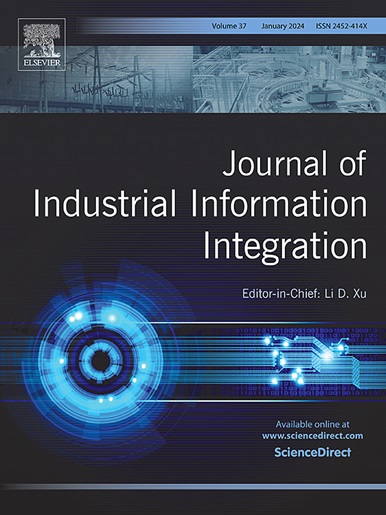EDLIoT:在物联网中使用调度算法降低能耗和延迟的方法
IF 10.4
1区 计算机科学
Q1 COMPUTER SCIENCE, INTERDISCIPLINARY APPLICATIONS
引用次数: 0
摘要
在物联网等资源有限的网络中降低能耗一直是保证网络性能的主要挑战之一。本文采用合作博弈论来改进雾计算资源的合作模式。EDLIoT 方法包括两个主要步骤:"拓扑构建 "和 "确定处理物联网对象任务的最佳雾计算资源"。在所提方法的第一步,确定网络中的可靠通信集,以树形结构的形式建立物联网对象与雾计算资源之间的连接。然后,在第二步中,使用基于合作博弈论和成本函数的模型来确定雾层中用于外包处理物联网对象任务的最优计算资源。在 EDLIoT 中,活动物联网对象在雾层而不是本地执行计算,以节约能源。这样做是为了让物联网对象尽可能根据计算资源的能耗、延迟和处理能力等特征,发现雾层中最合适的处理资源。我们在模拟环境中评估了所提方法的效率,并将结果与之前的算法进行了比较。结果表明,使用 EDLIoT 方法,除了能降低能耗和延迟外,还能通过雾资源处理更多计算任务,从而提高物联网用户的服务质量。本文章由计算机程序翻译,如有差异,请以英文原文为准。
EDLIoT: A method for decreasing energy consumption and latency using scheduling algorithm in Internet of Things
Decreasing energy consumption in networks with limited resources, such as the Internet of Things, has always been one of the main challenges in guaranteeing network performance. In this article, cooperative game theory is employed to improve the cooperation patterns of fog computing resources. The EDLIoT method consists of two main steps: “Topology Construction” and “Determining Optimal Fog Computing Resources to Process IoT Object Tasks”. In the first step of the proposed method, the set of reliable communications in the network is identified to establish connections between IoT objects and fog computing resources in the form of a tree structure. Then, in the second step, a model based on cooperative game theory and the cost function is used to determine the optimal computing resources in the fog layer for outsourcing the processing tasks of IoT objects. In EDLIoT, active IoT objects perform computation in the fog layer instead of locally, to conserve energy. This is done so that IoT objects, if possible, discover the most suitable processing resources in the fog based on characteristics such as energy consumption, delay, and processing power of the computing resource. The efficiency of the proposed method has been evaluated in a simulated environment, and the results have been compared with those of previous algorithms. The results demonstrate that using the EDLIoT method, in addition to decreasing energy consumption and delay, more computing tasks can be processed through fog resources, thereby increasing the quality of service for IoT users.
求助全文
通过发布文献求助,成功后即可免费获取论文全文。
去求助
来源期刊

Journal of Industrial Information Integration
Decision Sciences-Information Systems and Management
CiteScore
22.30
自引率
13.40%
发文量
100
期刊介绍:
The Journal of Industrial Information Integration focuses on the industry's transition towards industrial integration and informatization, covering not only hardware and software but also information integration. It serves as a platform for promoting advances in industrial information integration, addressing challenges, issues, and solutions in an interdisciplinary forum for researchers, practitioners, and policy makers.
The Journal of Industrial Information Integration welcomes papers on foundational, technical, and practical aspects of industrial information integration, emphasizing the complex and cross-disciplinary topics that arise in industrial integration. Techniques from mathematical science, computer science, computer engineering, electrical and electronic engineering, manufacturing engineering, and engineering management are crucial in this context.
 求助内容:
求助内容: 应助结果提醒方式:
应助结果提醒方式:


